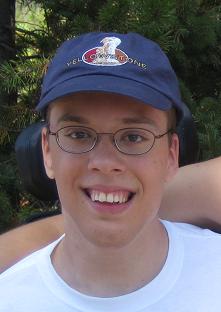Dave's Faves 1
 School and health issues are keeping me out of advocating trouble. I’m not having as much time as I’d like to post my thoughts, but many other bloggers are writing great stuff, and there are always interesting things to be found in the news. So, welcome to the first “Dave’s Faves”, where I’ll be linking to some of those interesting finds.
School and health issues are keeping me out of advocating trouble. I’m not having as much time as I’d like to post my thoughts, but many other bloggers are writing great stuff, and there are always interesting things to be found in the news. So, welcome to the first “Dave’s Faves”, where I’ll be linking to some of those interesting finds.
Steve Kuusisto, dealing with a guide dog stress injury, hits on an issue that is all too common for people with disabilities. “I wonder sometimes if the able bodied public knows that people with disabilities have stress injuries that are the result of their accommodations. Wheelchair users have carpal tunnel syndrome; back aches, neck aches, profound tension headaches—all of these things are essentially the norm for PWDs." So true. I need my computer because I cannot handwrite, but I get neck pain from using my computer too much. It’s tough to figure out the right balance when the computer is a necessary part of my independence and yet causes me so much pain.
"This is best for you." Ruth eloquently writes about those simple, yet incredibly annoying words that people with disabilities hear from total strangers. “So far the winner is a secretary at a local DME provider who ‘decided’ which wheelchair was best for me in less than a minute. I suppose she had a chart in front of her which indicated the exact model to "prescribe" for a quadriplegic. When I brought up the issue of what medical folks thought I should have, she promptly replied ‘Oh no. The model I gave you is the one you need.’”
As people often presume incompetence in all areas when one is in a wheelchair, Bridget Houlihan offers great examples about "what it takes to simply be your best when your have a disability." I can relate to her experience of hoping a college education would encourage people to take her more seriously.
“Bah humbug.” In Goals schmoals, Terrible Palsy shares her feelings about school and therapy goals for her son. “Stick your goals where the sun don’t shine. Happiness is all that matters.” Right on!
Thanks to Ruth for noting this USA Today article about the rise in reporting of housing discrimination. I did not know that housing discrimination on the basis of disability was as prevalent as discrimination based on race.
Ever been in the hospital at night? I have. Billie, at Micropreemie Twins, shares the wonderful night’s sleep she and her daughter get while in the hospital. Not! It’s common knowledge that sleep is necessary for healing – someone needs to tell hospital personnel.
Disaboom is a new website hoping to become a resource for the disability community. Check it out.
Mobility International USA is looking for 15-17 year olds with and without disabilities to participate in a 21 day trip to Bahrain next summer.
Finally, Amanda, at Ballastexistenz, shares and analyzes the story of a boy who really was a hero in Kid Hero Saves a Teacher.


















